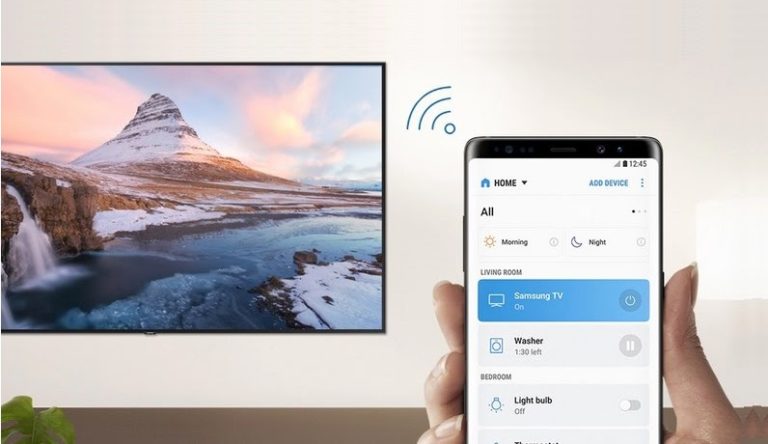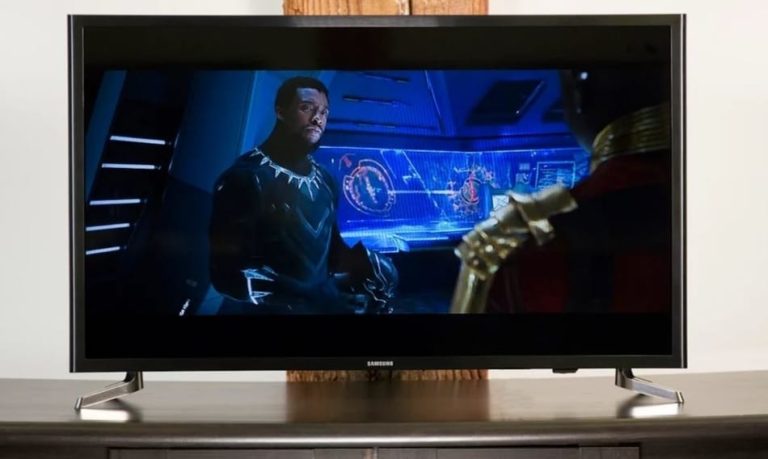How to Measure the Diagonal of Your TV?
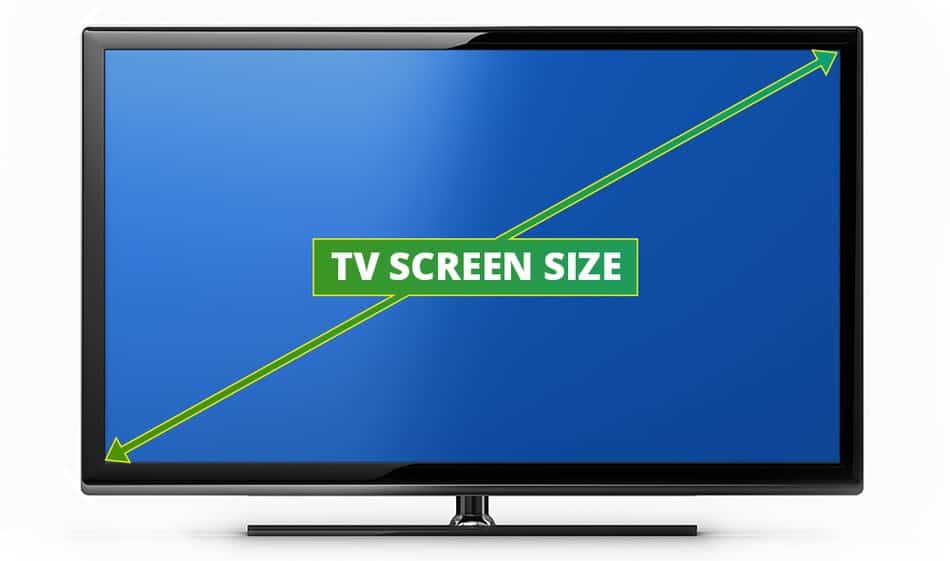
Buying a new TV is a big deal for every family. It is quite natural that consumers want to choose the best and highest quality TV-panel that will allow them to enjoy comfortable viewing of their favorite TV shows and films for many years. For most buyers, the screen diagonal is a strong argument in favor of this or that model. At the same time, many people are sure that the larger the display, the better and better the image. But is that really so? Let’s find out!
Table of Contents
How to Measure the Diagonal of Your TV?
So How to Measure the Diagonal of Your TV? The easiest way to measure the diagonal of any TV is to use the Pythagorean theorem. The diagonal squared of TV is equal to the width squared + the height squared. When you are measuring the diagonal of your TV, you only include the visible corners of the screen (not including any part of the screen-surrounding bezel).
Also, screen size can make a big difference when you need to replace an old device with a new one that needs to fit into the space provided for it. For this reason, before embarking on a quest for the ideal TV technology in all respects, it is recommended to know in advance how to determine the diagonal of the TV and choose the best model based on this characteristic.
This advice becomes especially relevant nowadays when about a quarter of all purchases are made in online stores and it is rather difficult to understand from a photo whether the selected device fits on a wall or a curbstone.
Why is the Diagonal Measured in Inches?
Before we move on to examining the question of how the diagonal of a TV is measured, we should understand what inches are and why they are used to characterize screens. So, an inch is a unit of a non-metric length measurement system.
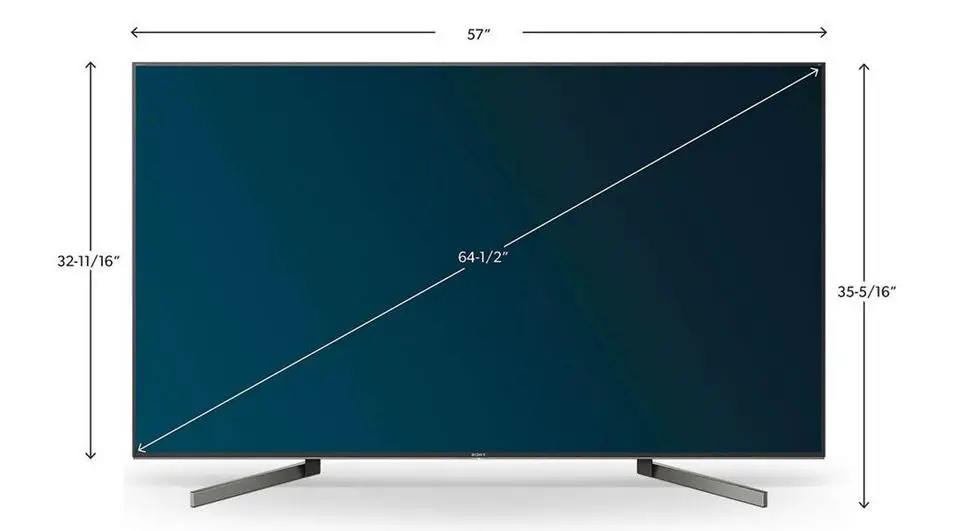
1 inch = 2.5 centimeters. In the old days, an inch was measured by the length of the second phalanx of the big toe of an adult male of the standard build. In Western countries, an inch is referred to as “in” or “inch”.
The dimensions of television screens are traditionally determined by the diagonal rather than by the length and width of the panel. There are several reasons for this phenomenon:
- On old televisions, a kinescope, a special round tube, was used to display images on screens. In this case, the diagonal of the picture was equal to the diagonal of the kinescope, and therefore the parameter under consideration was more significant than the length or width of the screen.
- Modern LCD monitors come in standard aspect ratios of 4: 3 or 16: 9. For this reason, only one variable is sufficient to determine the size of a television panel.
- The first television sets appeared in the United States of America, where, as you know, the classical metric measurement system is not used. For this reason, for the first time, the screen diagonal began to be indicated in inches, which subsequently took root and spread throughout the world.
Nowadays, inches are commonly used to denote the technical characteristics of various electronics supplied to the international market.
Best Way to Measure the Diagonal of Your TV
The easiest way to find out the diagonal of the TV is to look at the necessary information in the datasheet of the device or on the original packaging. In the event that neither one nor the other is at hand, you can search for information about the diagonal on the Internet by specifying the brand and model serial number in the search box.
However, as you know, situations are different. The instructions can be lost, and there is no access to the back panel of the device, on which many manufacturers indicate the diagonal. In this case, the user only needs to pick up the ruler and independently measure the parameters he needs.
The following methods will help to get an answer to the question of how to measure the diagonal of a TV:
- Using a ruler or tape measure, you need to measure the distance from the top corner of one of the sides to the opposite bottom corner. In this case, the measuring line should run obliquely. The frame that surrounds the screen is not taken into account.
- In order to measure the diagonal of a TV with a convex display for obtaining the most accurate calculations, instead of a tape measure or a ruler, you can use an elastic tailor’s meter or thread.
Complex Geometry and Online Calculators

In the event that you need to measure a large screen, which is almost impossible to do alone, in order to find out its diagonal, you should use a simple school calculation method. So the best way is to use the Pythagorean theorem.
The resulting numbers must be entered into a square, after which you get the sum of squares and extract the root from it. That is, for example, after measuring the length and width of the monitor, we get 75 – horizontally and 35 – vertically.
The squares of these numbers are 5625 and 1,225, respectively, and their sum is 6,850. We extract the root and get figure 82.7. Do not forget that the measurements were taken by us in centimeters, and the final values must be converted to inches, for this, we divide 82.7 by 2.54. Thus, the diagonal of the measured TV is just over 32 inches.
It is hardly possible to cope with the calculation on your own, without a calculator. For those who do not want to waste their time, we have developed a convenient online calculator that will calculate the diagonal in seconds – you just need to specify the length and width of the monitor in the appropriate fields.
How to Convert Inches to Centimeters
On the one hand, as we can see, you can measure the diagonal of the TV using a regular tape measure. However, on the other hand, you should consider the difference in measurement units – centimeters and inches.
Of course, if you wish, you can find a ruler with a scale that will show the desired result without unnecessary calculations. The only way out in this situation is to convert centimeters to inches or vice versa using a regular or online calculator.
Basically, all that is required to solve such a problem is to know that 1 inch equals 2.54 centimeters. Those. in order to get an answer to the question of how to calculate the diagonal of a TV, you need to take measurements using a standard tape measure, and then divide the result by 2.54, rounding down the quotient.
For instance. With the help of a tape measure, we found out that the diagonal of the TV screen is 82 centimeters. Divide 82 by 2.54 to get 32.28. Accordingly, the required TV panel diagonal is 32 inches.
For those who do not want to calculate the parameters manually, we have prepared a table for converting centimeters to inches and vice versa.
Diagonal Comparison Table
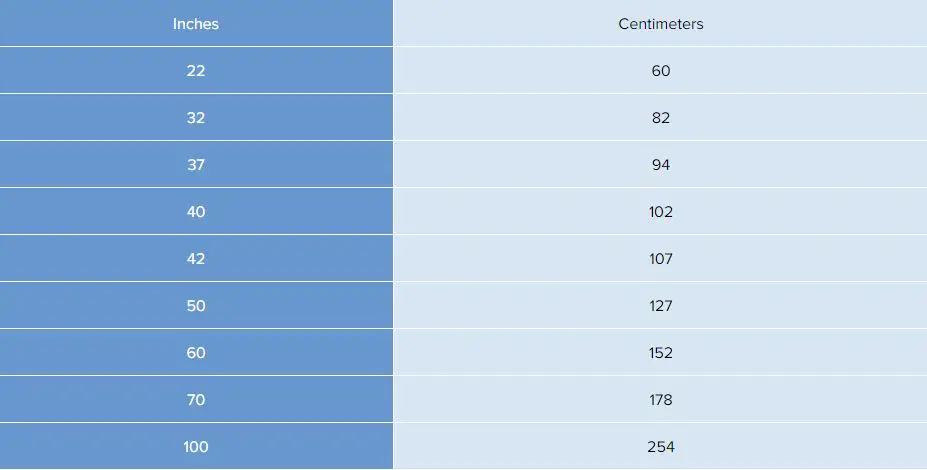
Using this table, you can quickly convert centimeters to inches and vice versa, thereby calculating the diagonal of the TV using a regular tape measure.
How to Choose the Optimal TV Diagonal?
The diagonal of the TV screen is a relatively independent characteristic that does not depend on other parameters of the device. The modern electronic market is a direct confirmation of this. So, for example, today you can easily find models with a relatively small diagonal and high resolution or, conversely, with low resolution and large diagonal.
However, this fact does not mean that when choosing a new TV panel, you should focus solely on the display size. Viewing comfort, picture quality, and detail depending on the ratio of diagonal, resolution and monitor sides.
To select the optimal TV model, we recommend that you follow the following rules:
- The larger the diagonal of the TV, the higher the screen resolution should be. The fact is that on large television panels, you can easily see any flaws and defects in the displayed image.
- The smaller the aspect ratio, the smaller the screen diagonal. In the event that we are talking about a huge TV with an aspect ratio of 4: 3, then a large area of the monitor will be “eaten” by black frames
- The larger the room, the larger the diagonal, and vice versa. Here’s a simple rule. So, for example, if we are talking about a small kitchen, then the best option would be a compact 19-22 inch monitor. If the buyer plans to equip a full-fledged home theater in a spacious living room, it makes sense to pay attention to modern liquid crystal panels with a diagonal of 90 inches and above.
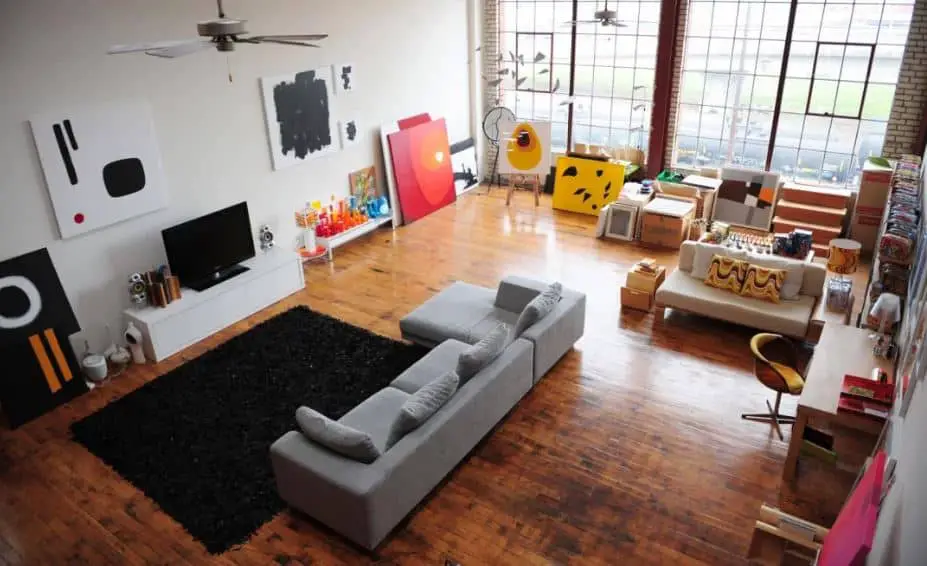
For standard rooms with an area of 16-20 squares, the optimal screen parameter will be 32-40 inches with an aspect ratio of 16:9 and a resolution of 1920 * 1080. If the monitor is smaller, viewers will not be able to fully enjoy the clarity and image quality.
If you buy a TV set over 40 inches, then the eyes of those in the room will start to get tired within 40-60 minutes after the start of watching your favorite movie. In any case, when choosing the optimal TV diagonal, first of all, you should pay attention to your own tastes, needs, otherwise, an expensive purchase will not bring joy.
What Does the Diagonal of the TV Screen Affect?
The diagonal of the TV screen is an important characteristic that largely determines the clarity and quality of the displayed picture. However, to select and buy the optimal TV model, it is not enough to know the required diagonal of the device. The following factors are equally important.
Diagonal and Screen Resolution
Resolution is a parameter that reflects the maximum number per square inch that a device can display at one time. The higher the resolution, the brighter, clearer, and more detailed the screen displays.
High definition video looks natural and vivid. It is better remembered and leaves behind an extremely positive impression. It is quite natural that a person wants to see a beautiful picture on the big screen. Therefore, in the modern market there is an unspoken rule – the larger the diagonal of the TV, the higher its resolution. But this rule is not always observed and, if desired, buyers can find a TV model with a large diagonal and low resolution.
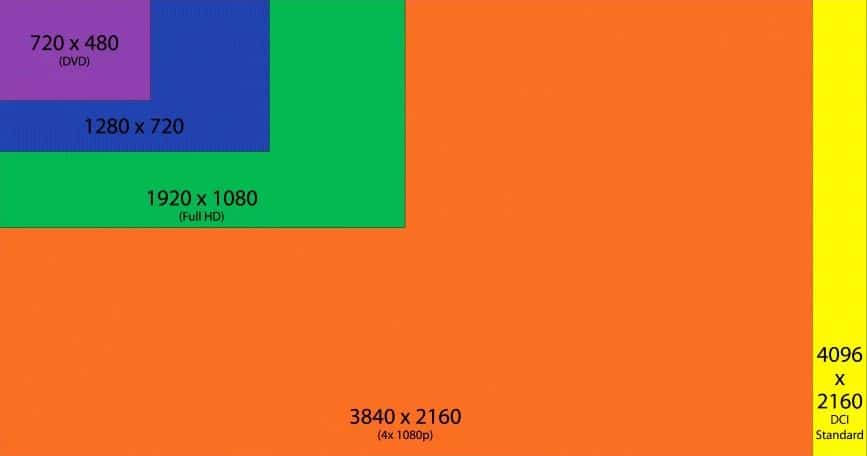
Diagonal and Installation Location
Unfortunately, most of our compatriots live in standard apartments, the main drawback of which is the limited area. In a cramped environment, it can be difficult to find a suitable place for a large TV. Indeed, according to the manufacturer’s recommendations, for normal ventilation of the device, it will be necessary to provide a gap between the device and other objects of several centimeters.
Of course, when space is limited, a large panel can always be hung on the wall. However, here too there are certain difficulties due to the construction of the walls. Plasterboard partitions simply cannot withstand the weight of the device, which can ultimately lead to its fall and failure. Therefore, before you go to the store for new equipment, you need to know how to determine the diagonal of the TV based on its installation location.
Screen Diagonal and Viewing Distance
During the old CRT TV receivers, there was a formula according to which the ideal distance from the monitor to the viewer was considered to be a distance equal to 4-5 screen diagonals. The emergence of innovative technologies has made it possible to significantly reduce the harm from TV to human eyes, due to which the choice of distance is carried out mainly based on the convenience of viewing the video sequence.
Viewing comfort depends on the pixel structure of the picture on the screen. In this case, the optimal distance for watching TV is considered to be the distance at which the viewer cannot see the pixels (colored dots) on the screen. It is noteworthy that if we are talking about large-sized television panels, then when they are viewed at a short distance, the illusion of being in a cinema is created. In such conditions, peripheral vision is involved and a person gets the opportunity to fully immerse himself in the plot of a program or film.
However, if you watch educational programs or news programs on TVs with a large diagonal, you will have to sit back as far as possible in order not to lose sight of all the elements of the screen – titles, creeping line, timer in sports matches, etc. Ideally, the distance from the monitor and its diagonal should be selected in such a way that when viewing, the audience does not have to constantly turn their heads and change their body position in order to keep track of what is happening.
Screen Diagonal and Viewing Angle
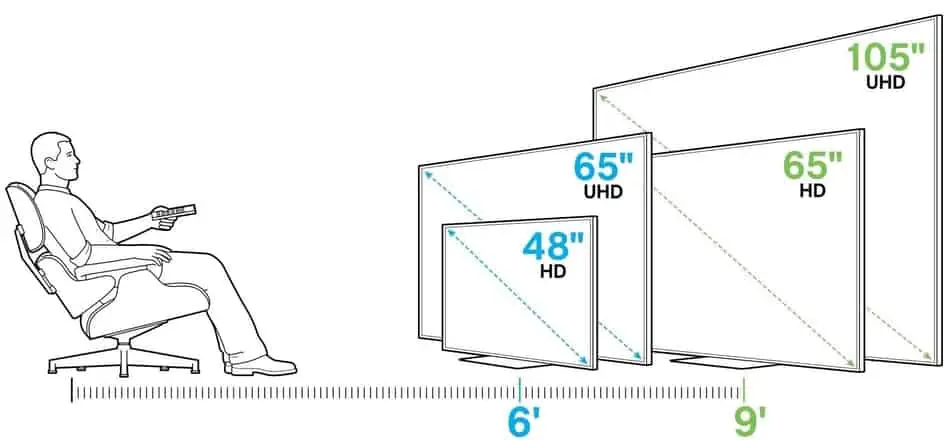
Until recently, such a parameter as the viewing angle of the TV was not given due attention. However, today the situation has changed and with a competent balance of such characteristics as diagonal, resolution, and viewing angle, it becomes possible to achieve the “presence effect” of the viewer. Thanks to this effect, a person gets the opportunity to immerse himself as fully as possible in the vicissitudes of the plot development and get maximum pleasure from watching the film.
The effect of presence is influenced by peripheral vision, which “turns on” depending on the viewing angle of the picture. In different sources, you can find various recommendations for choosing a TV diagonal, depending on the viewing angle. In particular for HDTV models, the following tips apply:
- 20° viewing angle – at this viewing angle, the viewing distance is equal to the screen diagonal multiplied by 2.5;
- 30° viewing angle – in this case, the viewing distance is calculated based on the diagonal of the TV multiplied by 1.6. This option is especially popular for modern home theater systems.
- 40° viewing angle – the viewing distance should be 1.2 times the diagonal.
After the buyer has decided on the possible viewing distance and viewing angle, he can choose the optimal diagonal of the future TV. Or vice versa, first the consumer chooses the maximum possible diagonal, after which he determines the optimal place for its installation and viewing distance. The latter option is suitable for people who have an unlimited budget for the purchase of equipment and do not experience problems with free space in a house or apartment.
Final Thoughts
Summing up, it can be noted that the comfort of watching TV and the quality of the displayed image depends on the correct choice and calculation of the diagonal of the TV device. It is quite expected that the price of the model depends on the size of the screen. In practice, compact versions of liquid crystal panels can be several times cheaper than larger devices.
Unlike their CRT predecessors, modern TVs are getting bigger and thinner. Today, hardly anyone will be surprised by an LCD device 10 centimeters thick and 100-120 inches in diagonal. Such devices can be hung on the wall, using them, if desired, as an exclusive live wallpaper.
Simultaneously with the change in the standard of the diagonal, the purpose of the TV itself also changed. Nowadays, it is less and less used exclusively for watching TV. Advanced models from the world’s leading manufacturers are full-fledged media centers with a large screen and the highest image quality, which in terms of detail, resolution, color, and sound is in no way inferior to the picture on large cinema screens.


